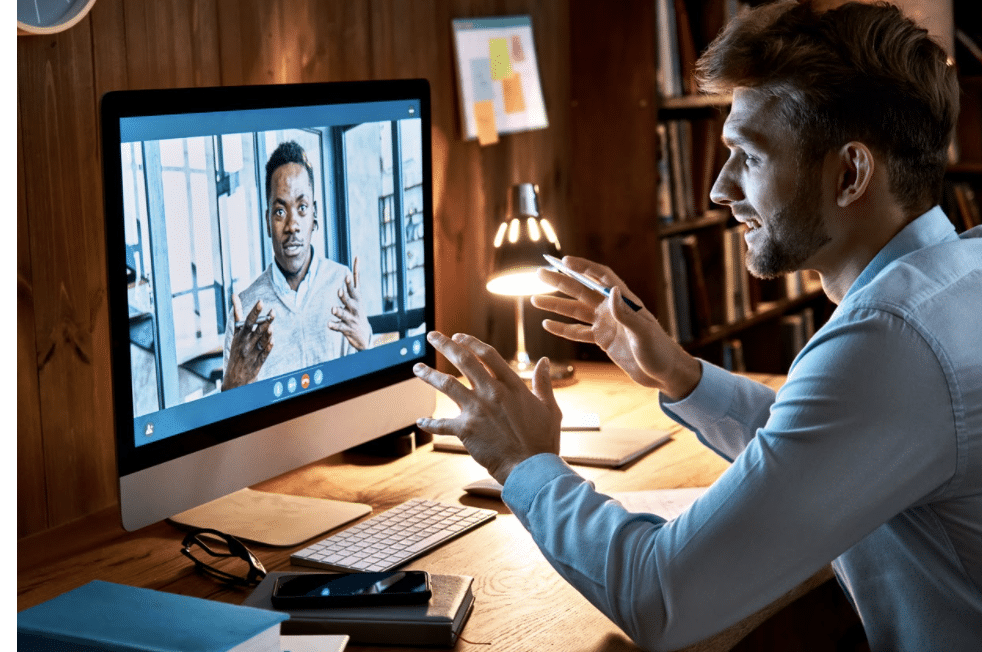This post continues our series by a onetime academic job seeker, now academic-at-large.
Before March of 2020, the virtual interview—a fairer and more ecological method, some have argued, of screening candidates in the first round of job searches—had made some inroads as part of the academic hiring process. The months between March 2020 and the present have been an intense laboratory for the practice, as hiring institutions have had to move everything online, including residency interviews for medical students and campus visits for final-round candidates for faculty jobs. After a year of this natural experiment in virtual interviewing, the Internet is full of new advice for candidates and committees who will do this in future.
For The Candidate
Some COVID-generated advice to candidates doing their interviews over Skype or Zoom is familiar. “Control what you can control” during a virtual interview, Bertin M. Louis, Jr. wrote in a series of columns offering advice for interviewees early in the pandemic. Dress properly, find ways to convey enthusiasm about the position, and pre-prepare answers to the kinds of generic questions that institutions often pose. In a letter sent to Karen Kelsky in response to an urgent call for counsel for candidates facing virtual campus visits last spring, one veteran of such a visit recommended getting as professional a setup as the interviewee can afford—microphone, ring light, and tripod for a webcam. Another thought being at a computer that’s wired directly into the Internet—no wifi router in between—would eliminate another possible source of instability.
Rehearsal of the job talk and its technical aspects, everyone agreed, is key. The candidate should rehearse every screen share and transition more than they think could possibly be necessary. Keep a glass of water, a notebook to take physical notes, your phone in case there’s an internet problem, all nearby, another recommended, adding, “wear contacts if you can; avoid glasses because of the glare.” The advice to be found in this treasure trove—a collection of documents for medical students facing COVID-safe virtual interviews for their residencies—echoes many of these practical points.
The social parts of virtual interviewing, some argued, can also be practiced. Another letter-writer to Kelsky, with a lot of experience teaching and facilitating groups over Zoom, pointed out that eye contact with interviewers—maintained through looking at the camera, not at the screen—was important, and a “learned skill.” “I suggest not only running through your spiel via the platform you’ll be using, but also spending a few hours with different people you don’t know well talking via the platform….With strangers, if you can,” this advice-giver suggested.
For The Institution
Creating conditions for the fairest possible virtual interview process is an institution’s responsibility, and during the pandemic, committee members have been scrambling to meet it. In a best-practices document meant for search committees, Case Western Reserve University offered some advice for those in charge of constructing the experience from the institutional side. Make sure the committee has no more than six members, so that the candidate and the committee can really interact; pick a moderator for that committee, so that things go smoothly. Build in multiple fail-safes for tech issues: make sure everyone has an alternative method of contact; leave space between interviews if doing more than one in a row; test the sound and use headphones. In a response to Kelsky’s call for advice on virtual campus visits, a chair of a search committee recommended a lot of extra breaks for the candidate to recharge, and “making the norms explicit to candidate as well as faculty and students.” “Give them your cell phone number; be patient,” the respondent emphasized.
In an article summarizing advice to radiology students, their faculty advisors, and the search committees looking to virtually screen a large number of applicants for residencies, Tirath Y. Patel and co-authors recommended that institutions should use a central administrator, “to schedule and proctor the interview day grid.” To avoid problems with “Zoom bombing” (that’s when an unwanted intruder disrupts a videoconference), there should be somebody present at each interview who knows how to handle these security challenges. Looking on the bright side, Patel and co-authors thought one advantage of the virtual process might be the ability to tap a wider pool of interviewers: “residency alumni, retired faculty, and offsite residents and faculty.”
In fact, there’s a lot of hope out there that the experiences of 2020-21 will lead to progress. “I am confident that our hiring process not only led to the best choice, but that it screened out aspects of academic hiring that have long bothered me for how they replicate forms of privilege and implicit bias,” wrote Brian T. Edwards in the Chronicle of Higher Education, recounting the story of how he and his colleagues hired a candidate into a senior administrative position without ever meeting her in person. “Driven out of necessity, the way we structured our search process helped us focus more on the talents of the candidates and the likelihood of their success in the job than on the superficial aspects of traditional interviews which tend to leave cultural self-replication unchallenged.”
Any opinions, findings, conclusions, or recommendations expressed in this material are those of the authors and do not necessarily reflect the view of Interfolio.
